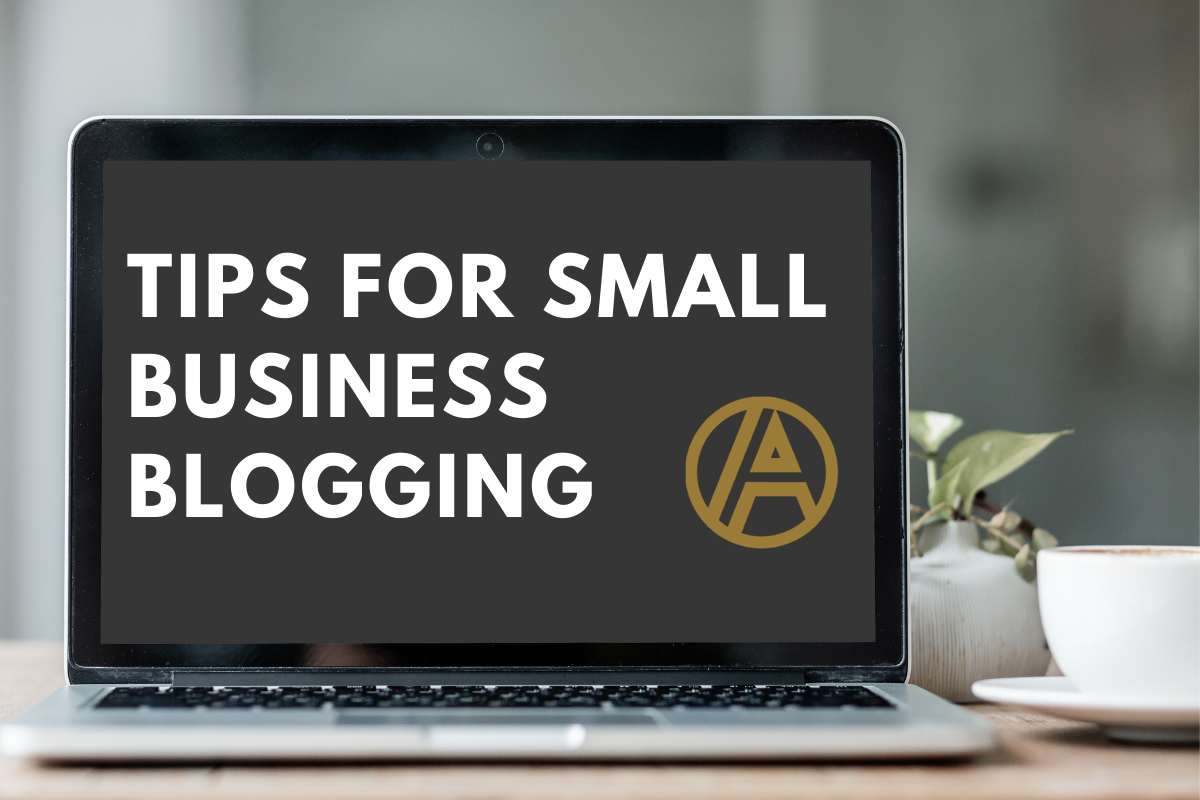If the idea of blogging for your small business feels daunting, you’re not alone! Many of our clients feel intimidated by the prospect of starting a blog, but with the right tools…it can be an incredible marketing tool for your small business!
According to Wordpress, over 409 million people view over 20 million blog posts each month. Through blogging, you’re connecting in a more personal way with existing and potential customers both in your own community, and beyond! An effective blog starts with one simple step: just start writing.
An effective blog starts with one simple step: just start writing.
Let's Discuss Your Blog Strategy
Why Blog for your Small Business?
Think about blogging as another tool in your small business toolbelt. It’s a way of keeping your audience up to date on recently completed projects, commonly asked questions, or current trending topics.
As noted in one of our previous blogs, the key is relevance. If you have information that people need, share it! A few benefits of small business blogging include:
- Blogging shares more about who your company is and what it’s all about (vs simply, what it does.)
- It’s your direct line of communication with your audience in a less business-like tone. You’re creating an interactive, two-way street with your audience.
- Blogging allows your brand personality to really shine.
- It boosts your SEO strategy by generating more traffic to your business website.
How do I start?
You can start by creating a “wish list” of content ideas. Don’t be afraid to add anything to the list. Think about:
What’s trending?
What projects have you finished that you’re especially proud of (and could link images to)?
What common questions do you receive about your business?
What seasonal posts could you sprinkle in throughout the year? Is there an industry expert that you could interview about a relevant topic? For more blog generation ideas, check out our blog about Using Your Blog to Build Growth.
Why Content Variety is Key
The beauty of sharing a variety of blog content is that it can gain relevancy over time. Let’s say someone is looking for a specific topic in your industry - a blog that you put out 6 months ago may provide just the answer that a potential customer is seeking. Additionally, they’ve created a connection with you, and they’re more likely to reach out to your small business.
More is More
In this case, the more blogs that you can put out there, the better. We noted earlier that effectively starting a blog starts with simply…writing.
The next step is to keep writing. The more content that you put out into the “blog-o-sphere,” the more opportunities your small business will have to boost search optimization and drive organic traffic to your website.
Consistency & Frequency are Key
Being consistent when it comes to blogging is so important. You don’t want to write 4 blogs in one week, and then go dark for a few months. Regular blogging allows the process of blogging to become easier, plus it drives more traffic to your site.
In terms of frequency, posting multiple times per week is ideal. Studies show businesses publishing 16 or more blog posts per month received 3.5 times more traffic for their blogs than those who had significantly less. Do this for 6 months, and you’ll have almost 100 blogs!
Blog Framework
What are the key things to include in your blog? As we’ve discussed before in our “Do Blogs Still Matter” blog, the framework is key. Here are a few tips:
- Streamline your content - No one wants to read long, run-on paragraphs. Keep your points brief and your information relevant.
- Break it up – Create themes and break up the content into questions or topics. This helps guide the reader through a more consumable info-gathering experience. Use bullet points where possible.
- Link away! – Create at least three internal hyperlinks within each blog post. By doing this, you’re directing readers back to the most relevant pages on your website. This also helps improve SEO. You can also externally link to other sources to share relevant data, however we suggest no more than two external hyperlinks per blog.
- Add in long-tail keywords - These are the phrases that people use in a voice search, or the keywords used when they’re close to the point of purchase. It’s the difference in searching for the word “tree” vs the long-tail version, “Western Red Cedar.” This keyword specificity adds weight to your content.
- Include CTA’s - That’s “Call to Action.” This can be done by creating a page button that encourages a reach out connection back to your business.
- Images - Whether it’s a screen grab, an infographic, or an image, visuals add variety to your blog, and break up the visual experience for the reader. However, be sure to source anything you use, and if it’s an image– make sure you get permission if it’s not “public domain.”
- End your blog with a question - This is a great way to keep the conversation going with your audience!
Not just a One-Way Street
This leads us to another beauty of blogging: by asking questions and inviting feedback, you are creating a two-way conversation with your audience. Through blogging, you are creating an interactive platform where people are conversing about a topic that you’ve put out there.
Plus, you’re sharing knowledge and expertise with your audience. This builds trust among your customers and positions yourself as a thought-leader.
Additionally, you’re able to see your business through the eyes of the consumer, allowing you make changes or improvements as necessary.
Defining your audience
Need a bit more insight into who you’re talking to and how to connect with them in your blogs? Check out our blog about the demographic info and data that’s at your fingertips about your audience.
Sharable Wisdom
Lastly, one of the best things about small business blogging is its share-ability. Not only can you promote your blog content on your own social media platforms, but your audience can too. One they read your blog, they have a new sense of “knowledge ownership” and may want to share it with their own network on Twitter, Facebook, LinkedIn and other platforms.
Add these blogging tools to your small business toolbelt, and you’ll be well on your way to expanding your SEO and connections with your audience!


 Carolyn Baughman
Carolyn Baughman